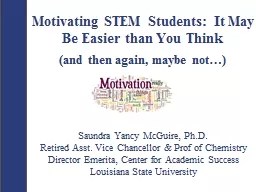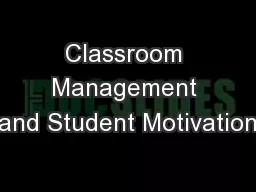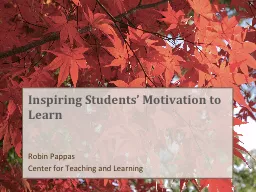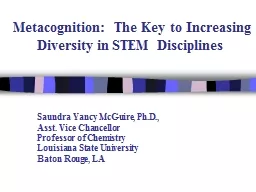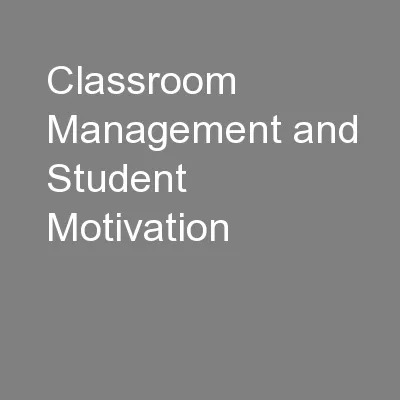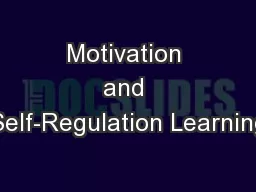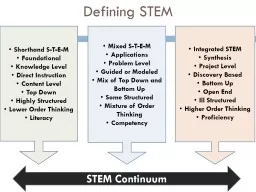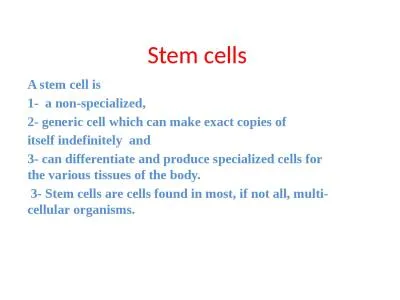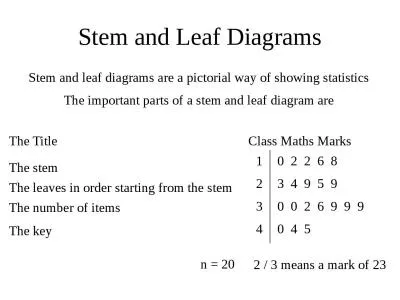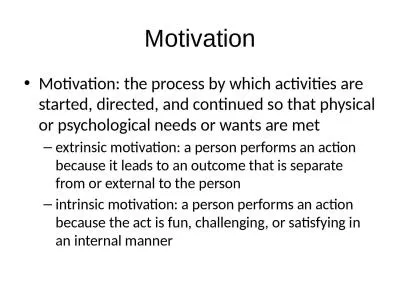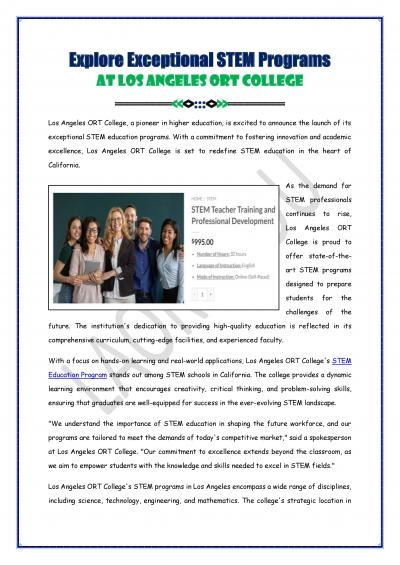PPT-Increasing STEM Students’ Motivation: Strategies That Wo
Author : giovanna-bartolotta | Published Date : 2017-08-09
Saundra Yancy McGuire PhD Distinguished Alumna Southern Univ Dept of Chemistry Retired Asst Vice Chancellor amp Prof of Chemistry Director Emerita Center for
Presentation Embed Code
Download Presentation
Download Presentation The PPT/PDF document "Increasing STEM Students’ Motivation: ..." is the property of its rightful owner. Permission is granted to download and print the materials on this website for personal, non-commercial use only, and to display it on your personal computer provided you do not modify the materials and that you retain all copyright notices contained in the materials. By downloading content from our website, you accept the terms of this agreement.
Increasing STEM Students’ Motivation: Strategies That Wo: Transcript
Download Rules Of Document
"Increasing STEM Students’ Motivation: Strategies That Wo"The content belongs to its owner. You may download and print it for personal use, without modification, and keep all copyright notices. By downloading, you agree to these terms.
Related Documents

